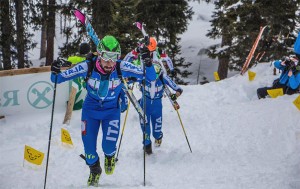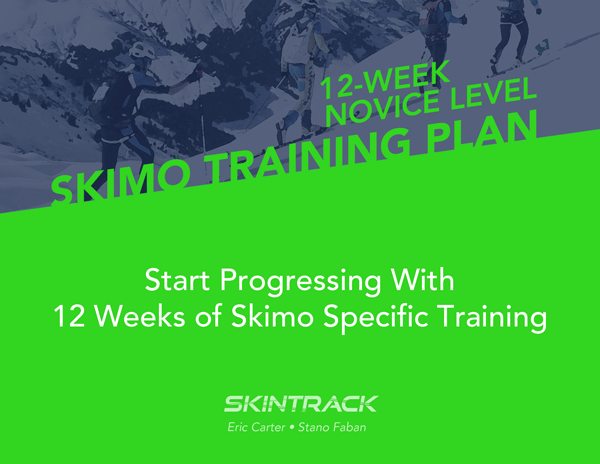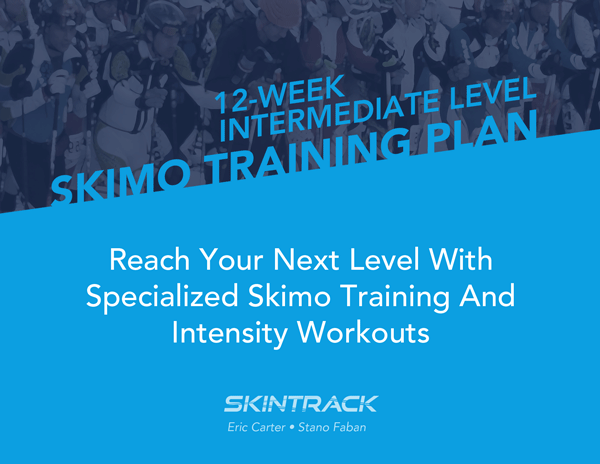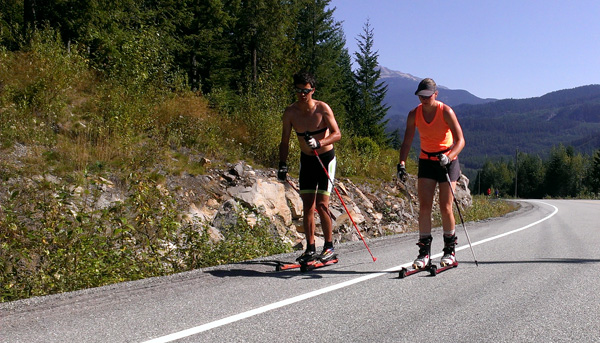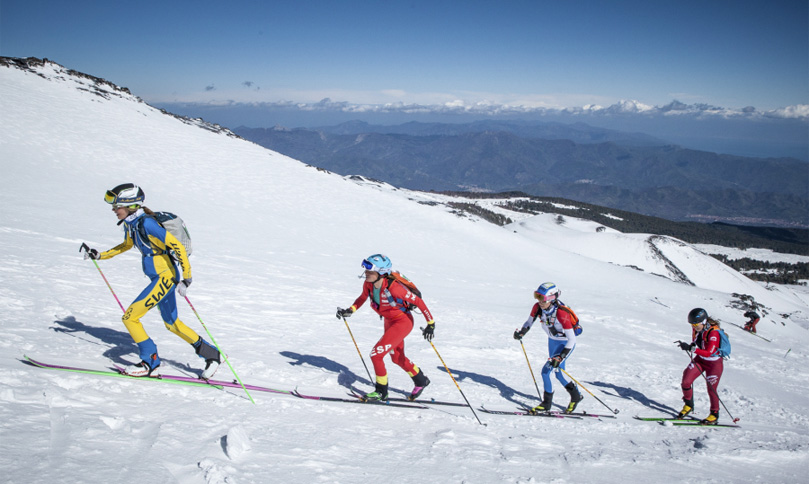
In any competitive sport, once you want to improve your speed beyond a certain plateau, you will have to incorporate regular high intensity sessions into your training (Zone 3 to Zone 5).
Skimo is no different and its various technical aspects introduce even more complexity compared to running or cycling. Skimo race courses travel across a variety of terrain, with most including technical climbing than just going straight up groomed runs.
With that, you might be wondering whether you should do your intensity interval workouts on nicely groomed runs or in a skin track?
Comparing Terrain: Groomed Ski Runs vs Skin Tracks
Comparing the two, by looking only at the terrain, the difference is obvious. Groomed ski runs are easy to climb up even for a skimo novice while skinning in a skin track requires more skill, especially, if your are trying to go fast.
Here are a couple of less obvious points how skinning between these two “terrain types” differs:
- It’s easy to set into a steady rhythm for long periods of time on a groomed run. Skin tracks with switchbacks break your rhythm often, whether that be your breathing or your stride.
- Having a consistent skin traction and grip on a groomed run is much easier than in a skin track because keeping good balance is less challenging.
- Skin tracks usually have switchbacks, thus, your proficiency in kick-turns is crucial to maintaining your speed throughout the climb or high intensity interval.
We can point out more differences but the bottom line is that skin tracks require you to be a much more proficient and technically skilled athlete than groomed ski runs.
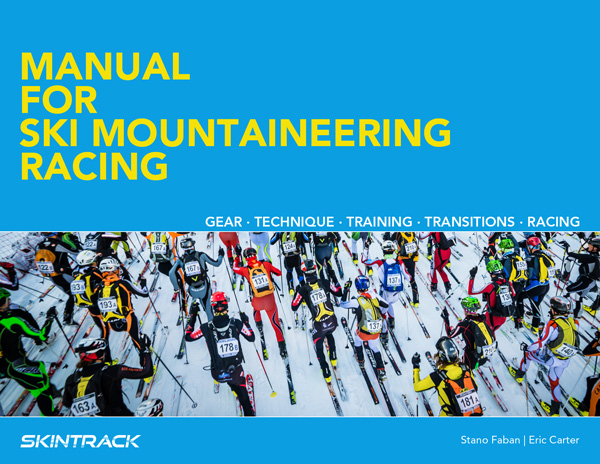
How To Choose The Best Terrain For Your Interval Training?
Now that we are clear on the difference of the terrain types, let’s take a look at how you should decide which workouts to do on groomed ski runs and which ones in skin tracks with kick-turns.
Consider Your Goals and Upcoming Races
The two most important factors when “designing” your intensity workout should be:
- The goals you have for that workout as part of your overall training goals.
- What type of terrain you expect in your upcoming important races?
It should be obvious that if you are training for vertical races primarily then performing intervals in skin tracks is not critical to your improvement. In fact, in this case, it might be even be detrimental.
The opposite is true if you are training for technical race or a classic European skimo race like the Pierra Menta. PM’s courses take place almost exclusively in skin tracks and the race includes many technical aspects overall.
Interval Workouts Suitable for Groomed Ski Runs
Early season interval workouts, at least the first few of the season, are best done on less technical terrain, otherwise, you might simply not be able to hold the required intensity for long enough (which is crucial for further progress).
VO2max, or Zone 4 high intensity intervals (5x 5min), are also better performed on ski runs because holding the high intensity for the entire length of the interval is very important in developing your VO2max.
Another example would be maximum speed sprint-style intervals (30x 30sec full-out efforts), it would be counter productive to perform them in a skin track. After all, the goal with these is to generate as much power as possible so it’s best when the snow surface is very supportive and consistent.
Interval Workouts Suitable for Skin Tracks
As already discussed above, depending on your goals and upcoming races, there are times when you can enhance your improvement by performing certain interval intensity sessions inside skin tracks with kick-turns.
If your goal race is a couple of weeks away and you know it will have plenty of skin track skinning, then completing your long intervals (3x 10min of Zone 3) and your high intensity intervals (5x 5min of Zone 4) using the same terrain as the race course, will make you feel strong and confident when the race day comes.
Once you achieve a certain level of technical proficiency, occasionally moving your interval workouts into technical terrain will continue to enhance your skimo progress. As long as you are able to hold the prescribed intensity, in any terrain, you will greatly benefit by matching the race environment as close as possible.
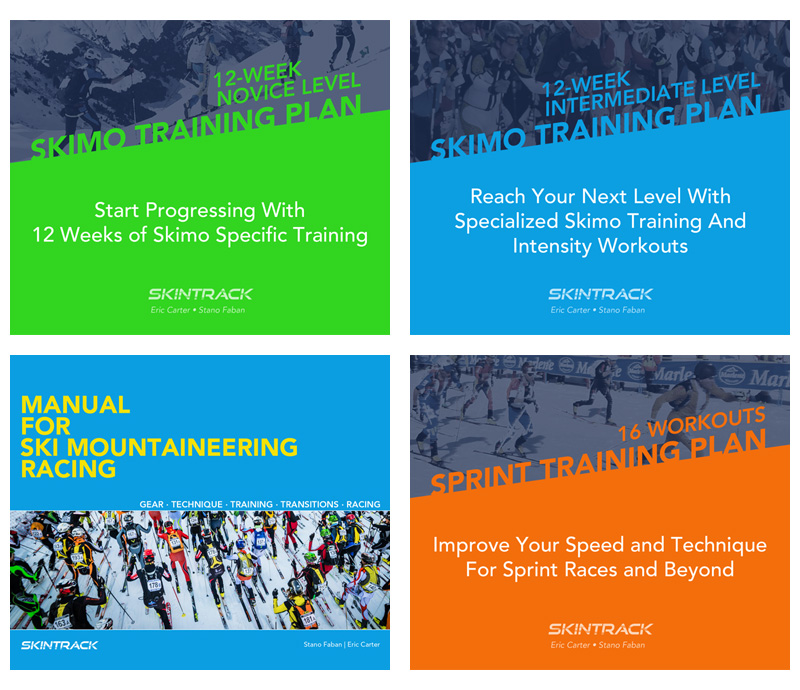
Early Season vs Race Season
Early in the season, the priority of your interval workouts should be on building your engine. Work on your technique during the long, easy Zone 1 sessions. Create the best possible conditions (including terrain choice) for a given workout to gain the maximum benefits for the time you spend. Just like you wouldn’t do Zone 4 intervals using your powder ski gear, you don’t want to choose terrain that prevents you from keeping the required intensity or speed.
As your season progresses and your goal races are approaching, design your workouts around the demands of those races. Unless you want to be a pure vertical race specialist, you will need to develop your technical skills while you are breathing heavily and your balance is compromised. Besides, the technical aspects are what makes skimo so appealing and interesting.
Sprint Race Training
Skimo sprints are a special kind of races that require great technique at high speed in quickly changing terrain.
They seem simple at the first glance because they take only 3-5min, however, even without considering the many transitions, a sprint race is arguably the most challenging event to perform successfully on consistent basis.
With that, performing high intensity intervals on sprint-like courses is one of the best ways to improve your skimo skills quickly. Anything done well at high speed will be much easier to repeat when your heart rate is lower. So even if you don’t participate in sprint races, you can greatly benefit by incorporating aspects of sprint races into your training, it is a very efficient use of time.




